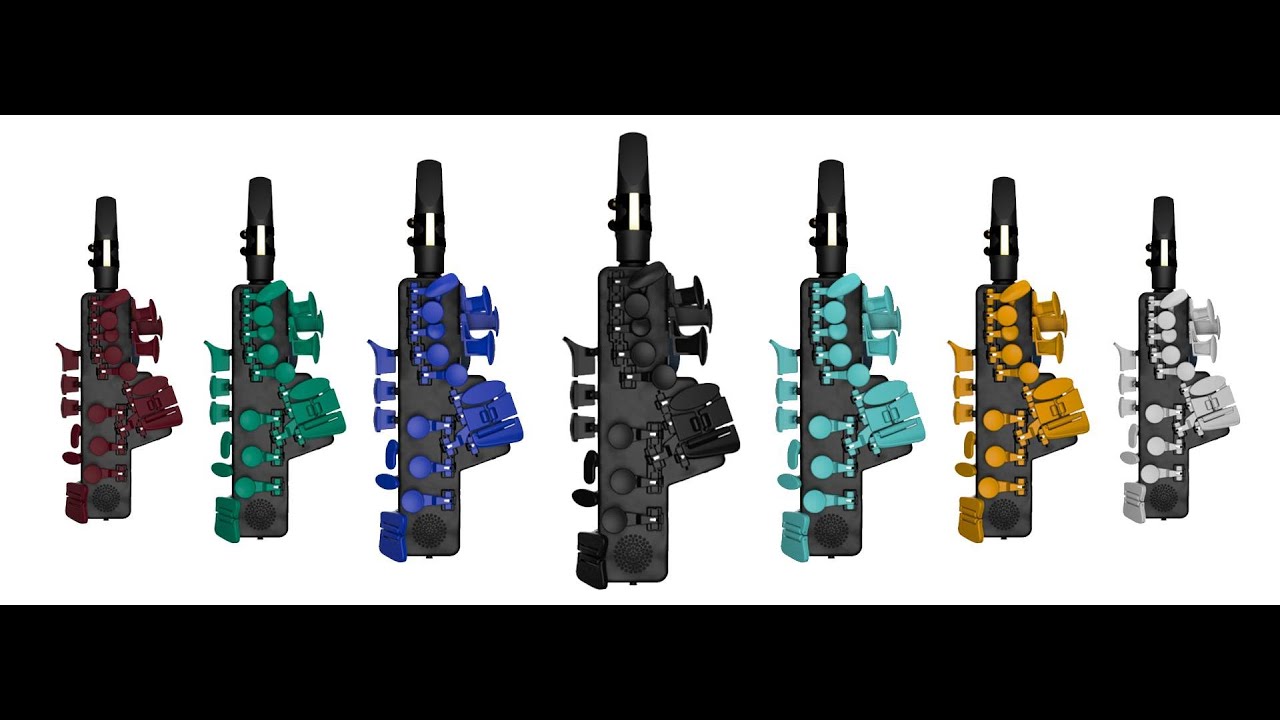The 5 definitive solutions so that you don’t get kicked out of the house and your neighbors don’t turn their faces on you.
For all budgets and needs!
One of the biggest problems for many musicians is being able to rehearse and practice at home. Most instruments are already adapted to provide a solution to this problem. So, we have electronic drums, electric guitars that you can connect to headphones or pianos that are totally silent.
In the case of certain instruments such as wind instruments, things get complicated. It is very difficult to be able to have a complete experience with a wind instrument without disturbing family members, roommates or neighbors.
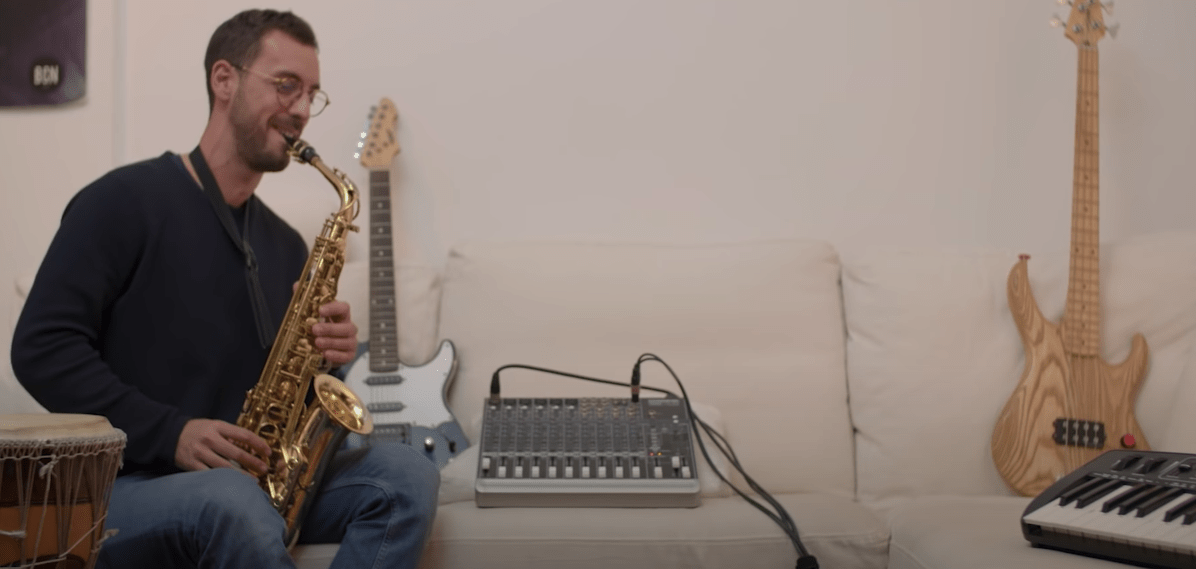

The sound of wind instruments is nourished by making the metal vibrate with the column of air, and doing this at volumes that do not exceed the 35/40 decibels required by law is very complicated. Specifically, the sound in average decibels of the saxophone is usually around 90db.
If you have come this far it is because perhaps you have ever encountered this problem. So we are going to propose some of the solutions most used by professional saxophonists, adapting them to all types of budgets and needs.
These are the 5 ways not to disturb your neighbors if you want to play the saxophone quietly. To make it easier for you, we have ordered them from lowest to highest budget:
1- MUTE
There are many types of mutes and each of them modifies the sound of the saxophone in one way or another. The one that most interests us for this particular case are the mutes that silence the sound, also called studio or recording mutes. There are numerous products of this type, one of the best known among the community of saxophonists being the Sax Mute mute. It is around €35/45 according to stores and it is simply a kind of sponge made up of nylon and carbon fiber that is tremendously resistant. They ensure that the sound level of the instrument is reduced by 50% and there are models for all types of sax, baritone, tenor, alto and soprano (both straight and curved). See more.
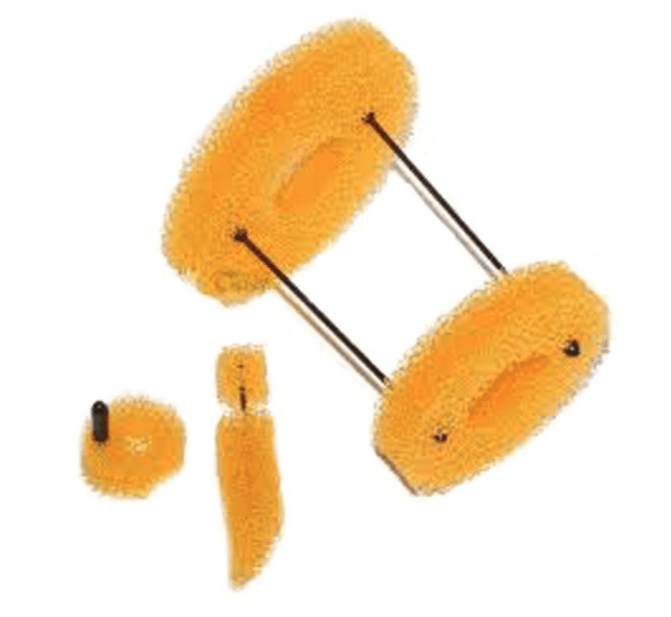

Price: 35/45 € depending on stores.
Pros:
- It is the most economical solution
- It is easy to use
- It is a very portable solution
Cons:
- It only mitigates 50% of the sound, for some cases it is not enough
- Maintenance is important so that the mute stays clean
- Durability
- It does not allow you to play the lowest notes (B flat) due to the lack of air column.
It’s your solution if… you don’t need to mute your saxophone a lot and you want something cheap that will help you to mute the sound.
2 – PRACTICE ROOM
A resource also widely used by many musicians. Bands have always rented their rehearsal rooms to make songs, almost always in places far from the city, in large industrial buildings where they don’t bother anyone. It is undoubtedly the most popular solution for musicians from all over the world.


Price: from €50 to €250 per month depending on whether you share a venue with other musicians or not
Pros:
- Own practice room
- It’s cheap if you share it with more musicians or bands
Cons:
- Travel to the practice room
- You do not have the independence to practice whenever you want
- It can be a high cost depending on the hours you want to practice per month.
It is your solution if¦ you have a band or want to get into the habit of studying in a practice room on the outskirts of the city and you have certain mobility. If your office is the practice room, it is your solution!
3 – SAXMUTE ONE
One of the latest solutions that have emerged has been the SaxMute One. It is an innovative product that deals with a kind of “shell” that surrounds the saxophone with several holes so that you can insert your hands to play and the neck with the mouthpiece to blow. Its price is around €330-450 depending on the store where you buy it. It is certainly ingenious and quiets the sound of the saxophone quite a bit, although its sonority varies a bit. More info.


Price: €330-450 depending on model and store.
Pros:
- Substantially attenuates the sound of the instrument without completely silencing it (up to 60%)
- It meets the goal of not disturbing neighbors and relatives even at home.
Cons:
- Very cumbersome and not very portable
- To play for a long time, the posture becomes somewhat uncomfortable because you don’t have much mobility.
- The saxophone pads end up sticking due to the condensation that is created inside the box.
It is your solution if you want to greatly silence your saxophone without caring much about comfort and ergonomics.
4 – TRAVEL SAX
Since 2019, the Odisei Music company has been developing the lightest and smallest electronic sax in the world (it is the size of a bottle of water). Faced with the problems caused by a conventional sax (it is a large, heavy instrument and is very annoying for others), Ramón Mañas created the Travel Sax. It is a complementary tool to the saxophone since it has the same fingering to be able to practice and apply the real knowledge of the instrument. It is also a MIDI controller and is connected by headphones so as not to disturb anyone. It is being sold in more than 50 countries and they have already released the second version with optimizations of all kinds. Here is a video so you can get to know it first-hand:
Price: €599 buying it from their website.
Pros:
- It has the same fingering as a saxophone and is for all levels.
- You can practice whenever you want because it is totally silent, it is heard through headphones
- It is totally portable, practical wherever you want.
- It is sensitive to airflow
- MIDI controller with any DAW (sound software)
Cons:
- It is not a saxophone, it is a complementary tool to study and practice in those places where you can never do it.
- Price not suitable for all budgets
It is your solution if you want to learn and practice saxophone when and where you want and you take it as a complementary tool to the main instrument, not as a substitute.
5 – SOUNDPROOF CABIN
Most musicians are familiar with this solution since it is the most widely used in professional recording studios. Of course, it is one of the most complete solutions because it completely isolates the musician and his instrument once they are inside, but it is also one of the most complex to carry out, since not everyone has the space and/or the budget. There are several types of soundproof booths. There are the construction ones made by companies specialized in soundproofing spaces (it is always recommended to leave this in the hands of professionals for optimal insulation) and soundproof booths that do not require work have also reached the market to stay. They are modular cabins like the ones in this photograph. Demvox is one of the best known brands in this sector.
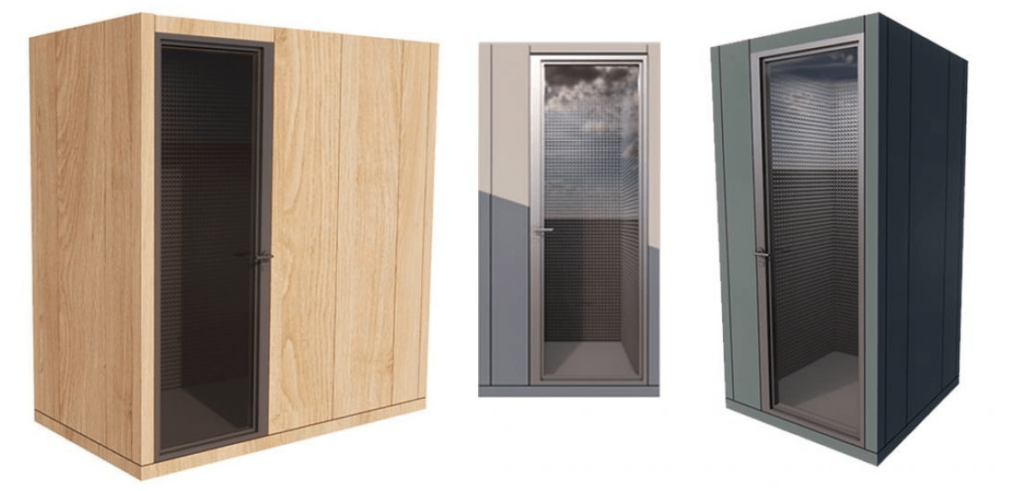

Price: from €2,500 onwards
Pros:
- It is the solution that will isolate you the most so that you do not bother
- You do not lose the original sound of the saxophone
- Good solution if in addition to isolating yourself you want to record yourself professionally
Cons:
- It has the highest cost of all the solutions (Between €2,500 and €7,000)
- You can have a strange perception of sound as it is a very small space (1x1m)
- Not a portable solution
- In summer it is usually very hot inside.
It is your solution if you are a sax professional who makes such a high investment profitable. It’s the closest thing to a professional studio when it comes to isolation and recording quality for your tracks.
WHAT DO THE LAWS SAY ABOUT NOISE AND NEIGHBORS?
An international consensus on noise and the maximum sound levels to which people must be exposed is complicated. In fact, in each country and even in each autonomous community or state, different regulations apply. Yes, there are coincidences in terms of the environments in which to limit decibels, being common laws for noise pollution in homes, work and work spaces, traffic, leisure and differentiation of levels between day and night.
With all this, the closest thing to an intermediate rule to which you can cling are the recommendations of the W.H.O. (World Health Organization). The WHO itself reminds us that noise is one of the main risks for both mental and physical health and well-being.
The World Health Organization (WHO) recommends not exposing yourself to values higher than 65 decibels (A), during the day, and 55 dB (A),
The organization also advises not to exceed eight hours a day in a workplace where there is more than 85 dB or 15 minutes of exposure to street noise, which is about 100 dB.
To get an idea in Spain, for example, in general, during the daytime it is forbidden to exceed 35-40 decibels and during the night, 25-30 db.
The following graph is interesting where you will find the decibel levels generated by the majority of everyday noises that we encounter on a daily basis.
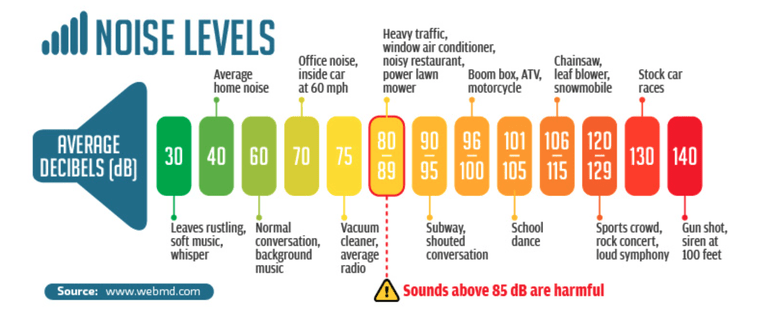

Now that you know more or less what the law is and what solutions you can adopt, you probably have more details to make a decision.
Making music and making the neighbors happy is possible!
Odisei Music Team 🎷
WHO recommendations on noiseThe WHO advice to listen to music without risk of hearing loss Noise levels

